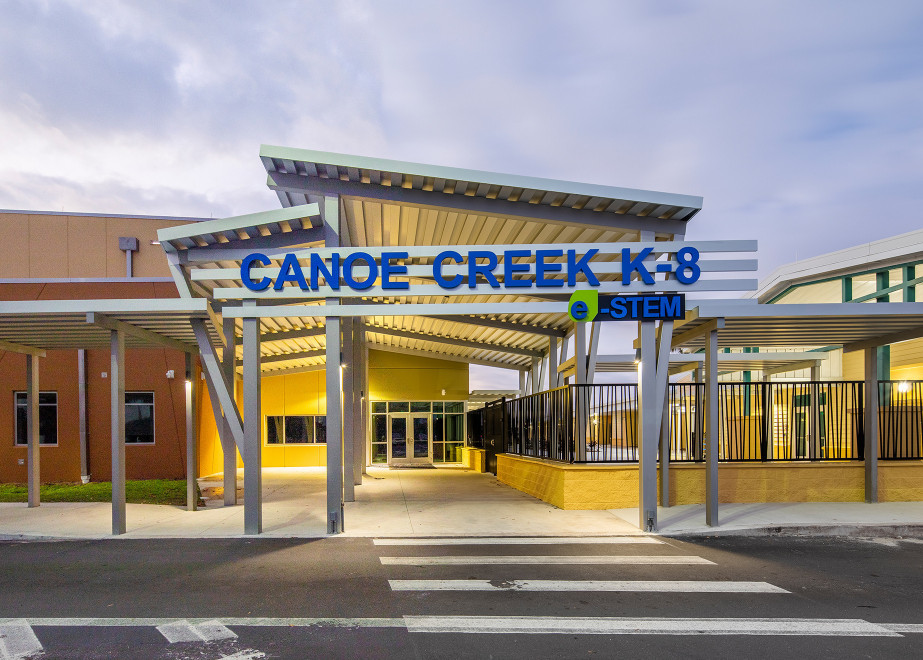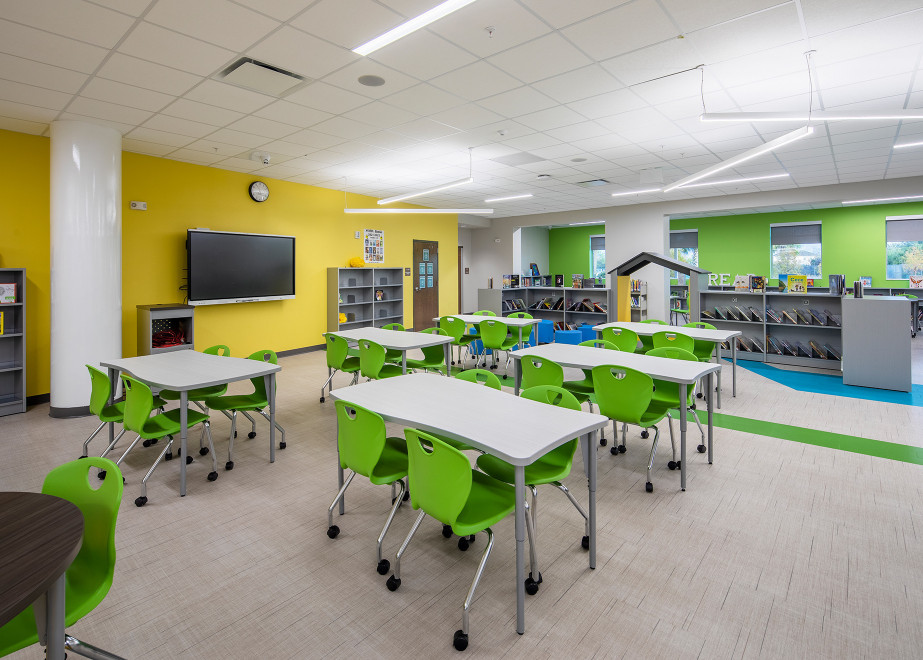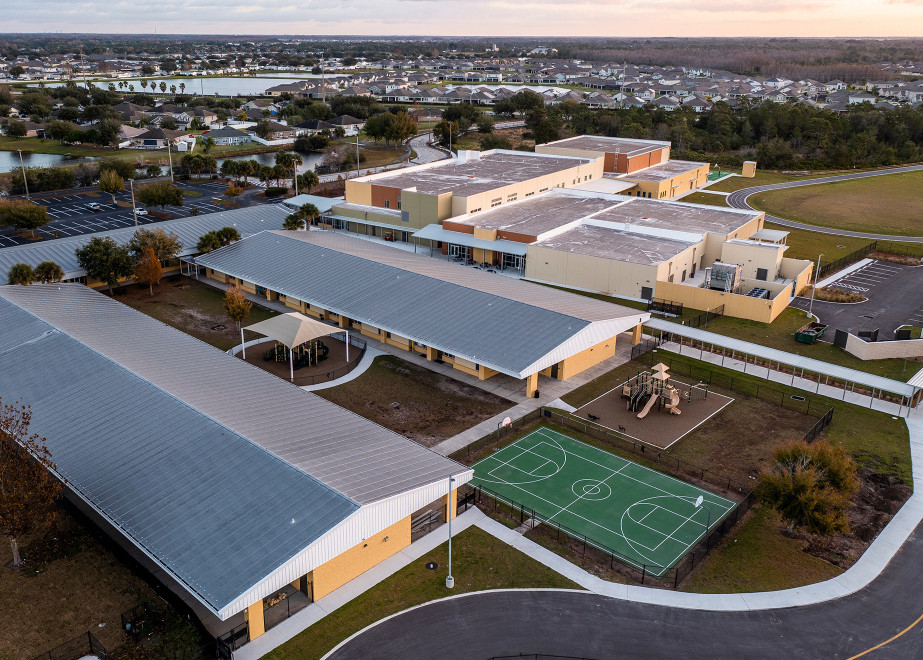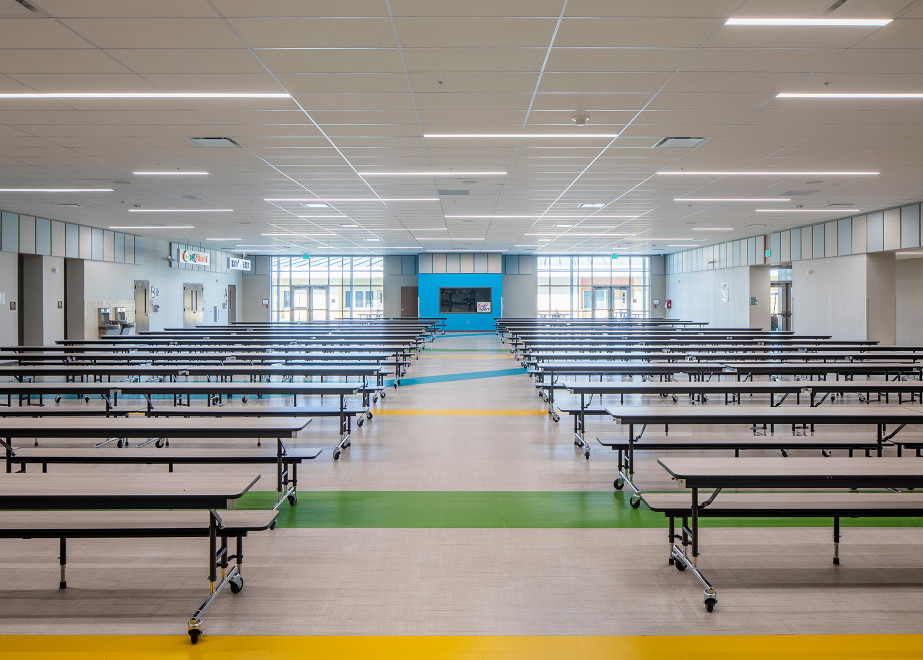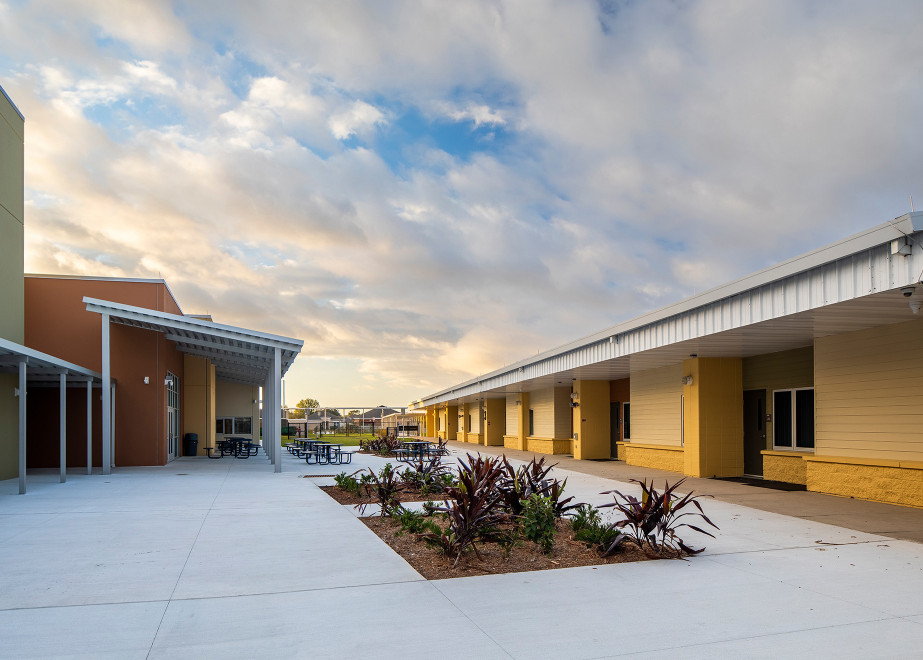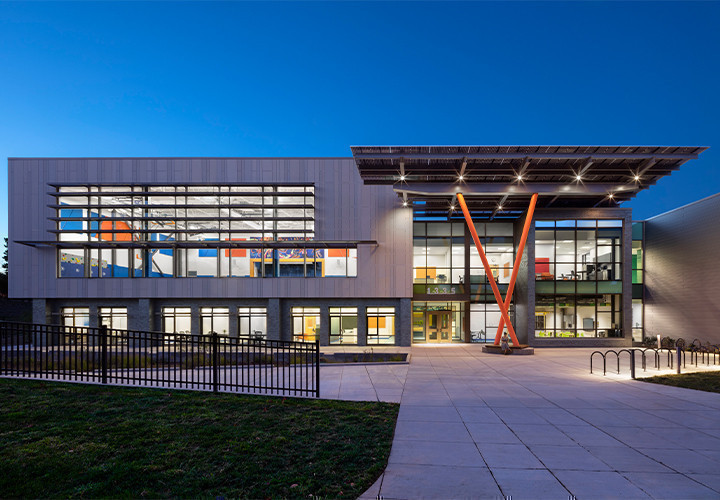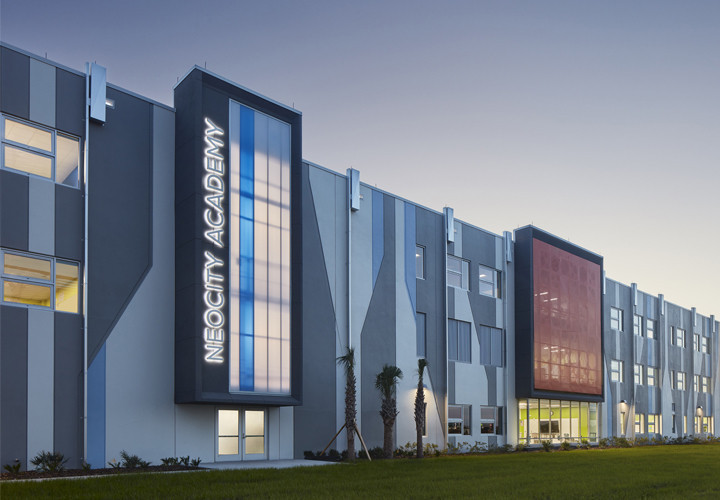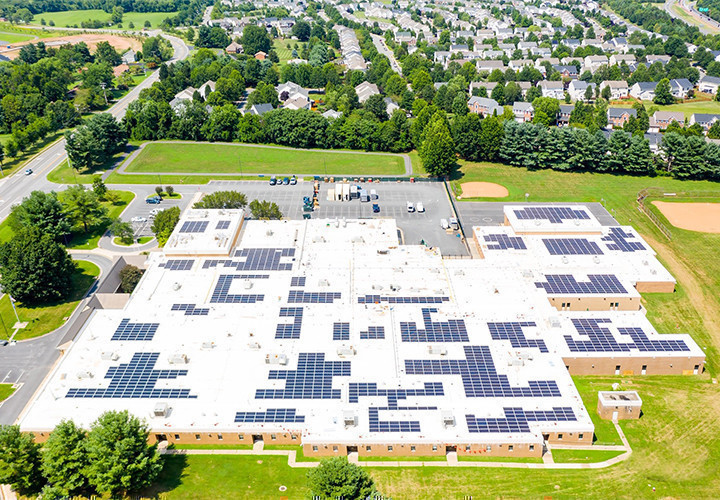The Solutions
After recent success at NeoCity Academy, the district’s and state’s first Zero Energy school, CMTA was hired to provide mechanical, electrical, and plumbing design, as well as technology design, for Canoe Creek K-8 School. The addition and renovation project includes a new, two-story classroom building, administrative and dining buildings, and a gymnasium. Other project components include telecommunications, access control and security design, and site utilities.
The new construction of Canoe Creek K-8 was designed to achieve drastic energy reduction with the potential for future roof-mounted on-site renewables. High-efficiency water-source heat pumps (WSHP) with a Dedicated Outdoor Air System (DOAS) condition the building and deliver fresh air to the spaces. Domestic hot water heat pumps and water-cooled IT systems are tied into the condenser loop. In addition, the lighting energy expended is only a fraction of what a typical school uses, thanks to a lighting power density of 0.33 W/ft2 and occupancy and daylight controls. An envelope mockup was also built on-site to validate and encourage proper envelope construction techniques. This mockup helped the high-performance envelope pass the building pressure test at an ultra-low 0.06 cfm/ft2@75Pa. Finally, the school incorporates several high-performance measures in the full kitchen, including leveraging ventless combi ovens and dishwashers that eliminate the need for Type I hoods and grease-laden ductwork, fans, or makeup air systems, as well as walk-ins with water-cooled condensers.
The RFQ for this project married two very different goals for SDOC: to provide a high-performance school with a low EUI and to utilize a prototypical design with an accelerated three-month design schedule. The prototype that was initially used was programmed for VAV air handling units and an air-cooled chiller plant. Without compromising on the total square footage dedicated to MEP and the general locations of the mechanical spaces, the design team was able to optimize the adopted prototype floor plan to accommodate a DOAS, distributed water-source heat pumps, condenser water loop with fluid cooler, and a water-to-water heat pump loop. From an MEP perspective, challenging the prototype process has allowed the team to continually refine and optimize within the prototype framework versus simply maintaining the status quo between consecutive prototypes.
Florida was one of the top 10 fastest-growing states between 2010 and 2020, with a population expanding by 15.6%. By comparison, Osceola County grew by nearly 50% within that same time. By choosing to incorporate high-performance design strategies within an existing prototype, the district will meet the continued student enrollment demand while simultaneously decreasing the district’s projected carbon footprint over the lifetime of the schools. On average, Florida schools are constructed for a lifespan of 50 years, and choosing a high-performance design for each new building prevents ~13,100 MT CO2e from entering the atmosphere, offsetting the work of 310 acres of U.S. Forests in one year.
